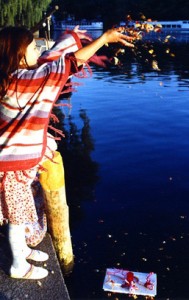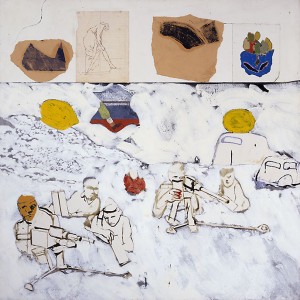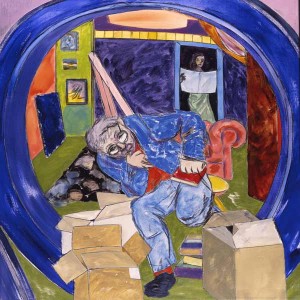A few years ago during a summer spent in Catalonia, I strolled through the port city of Sant Feliu de Guíxols. It is a special place: it was spared the transgressions of the Spanish coast’s building mania due to its fishing industry. It is not merely decorative but in fact successful in a particular industrial branch: producing cork. And here – nominally part of Spain but somehow a place all of its own – R.B. Kitaj and his wife spent the winter of 1953/54. Twenty years later, he bought a house in this town. What did it mean to him, this stubborn region that again and again rebelled against Spanish supremacy? → continue reading
Do You Know Catalonia?
New Customs for the New Year
 A few years ago, a guest lecturer from New York visited the Berlin synagogue at Fraenkelufer and showed our congregation a new way of practicing an old Rosh ha-Shanah custom, that of tashlikh.
A few years ago, a guest lecturer from New York visited the Berlin synagogue at Fraenkelufer and showed our congregation a new way of practicing an old Rosh ha-Shanah custom, that of tashlikh.
Usually Jews gather for the New Year holiday at the bank of a river and scatter breadcrumbs in the water as a symbolic way of shedding their misdeeds of the last year. The American professor did not strew breadcrumbs in the canal across from the synagogue however; rather, she placed a little homemade paper boat into the water, in which she’d tucked a letter to God. In the letter, she begged for forgiveness for her offences and affirmed her resolutions. The letter also contained thanks for the good experiences of the last year and her wishes for the coming one. → continue reading
R.B. Kitaj, the Bibliophile
Kitaj once said that books are for him what trees are for a landscape painter. His ateliers in the London neighborhood of Chelsea and in Westwood, Los Angeles, were crammed full of books, on shelves, around his easels and piled up on the floor.
He was already ranging through the cheap bookshops on 4th Avenue – the largest bookselling district in the world – on his way to Cooper Union when he was a student there. He found the modern classics like James Joyce, Ezra Pound, T.S. Eliot, and Kafka, as well as journals such as the “Partisan Review” and the American surrealist magazine “View.” In Oxford, his teacher Edgar Wind introduced him to the Warburg School and he bought a complete set of the famous “Journals of the Warburg Institute.” His visual imagination was fuelled by the illustrations for the “Afterlife of Antiquity,” copperplate engravings made according to ancient templates. In 1969, Kitaj published as silkscreens 50 book jackets from his personal library, in an edition that he called “In Our Time: Covers for a Small Library after the Life for the Most Part.” → continue reading

